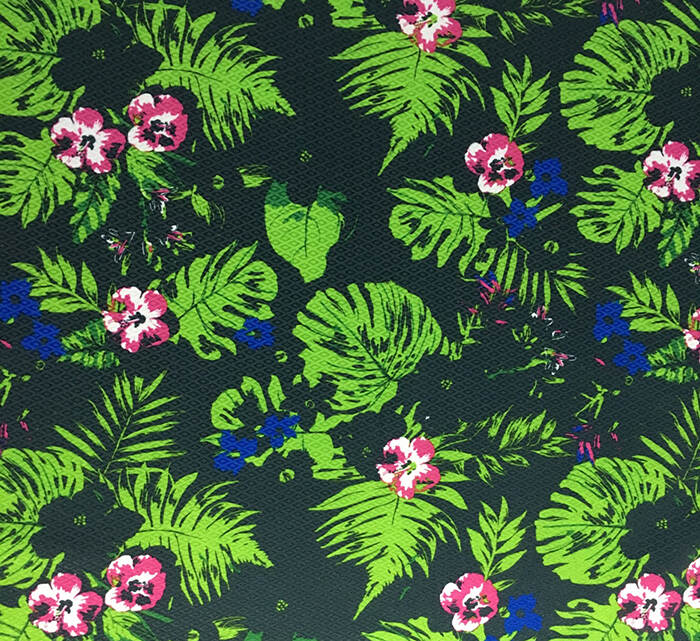Beach shorts printed fabric

Polyester is an important variety of synthetic fibers and is the trade name for polyester fibers in my country. It is a fiber-forming polymer prepared from purified terephthalic acid (PTA) or dimethyl terephthalate (DMT) and ethylene glycol (MEG) through esterification or transesterification and polycondensation reaction -- Polyethylene terephthalate (PET), fibers made by spinning and post-processing.
As a textile material, polyester fiber can be blended with which fibers, and which fabrics are common?
Polyester fibers have high strength, high modulus, and low water absorption, and are widely used as both civilian and industrial fabrics. As a textile material, polyester fiber (polyester) staple fiber can be spun purely or blended with other fibers, either with natural fibers such as cotton, hemp, wool, etc. or with other chemical staple fibers, such as viscose, Acetate fiber, polyacrylonitrile fiber, etc.
Cotton-like, wool-like, linen-like and other fabrics made of polyester fiber (polyester) pure or blended generally have the original excellent characteristics of polyester fiber, such as wrinkle resistance, wear resistance, etc., while some of its original Disadvantages, such as poor sweat absorption and air permeability, and easy to melt into voids when exposed to sparks, can be alleviated and improved to a certain extent with the mixing of hydrophilic fibers.
Polyester twisted filament (DT) is mainly used for weaving various silk-like fabrics, and can also be interwoven with natural fibers or chemical staple fiber yarns, and can also be interwoven with silk or other chemical fiber filaments. Series advantages.
The main variety of polyester fiber (polyester) developed in our country in recent years is polyester textured yarn (mainly low elastic yarn DTY). Has a high degree of elastic elongation (up to 400%).
Clothing containing polyester textured yarn has the characteristics of good heat retention, excellent covering, and drape, soft luster, etc.
